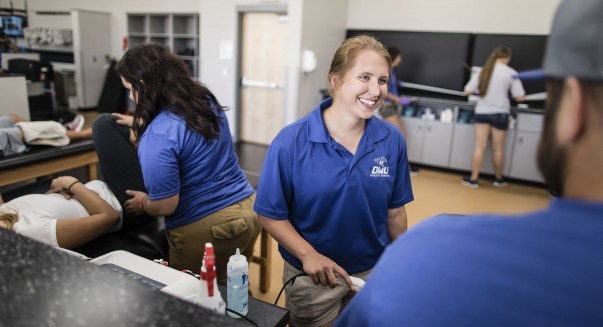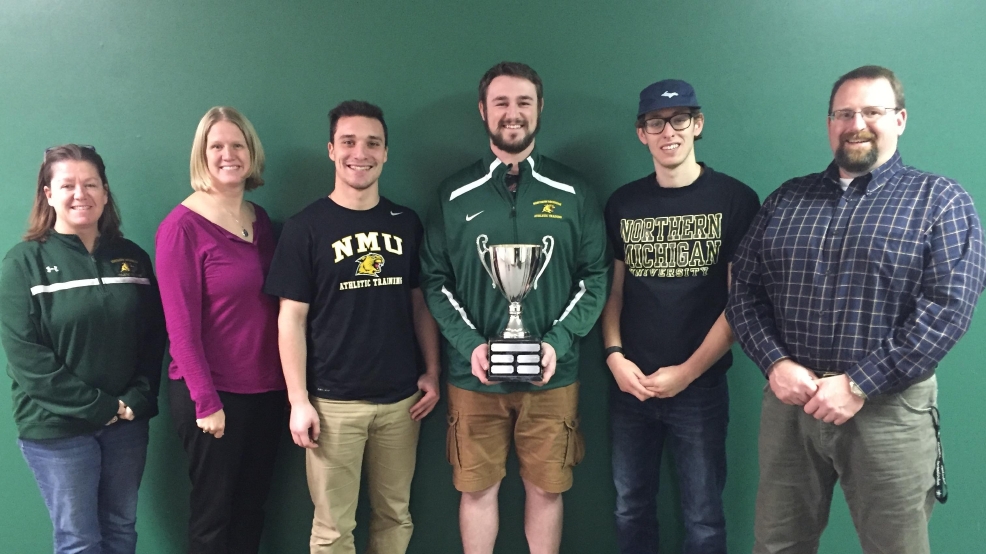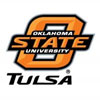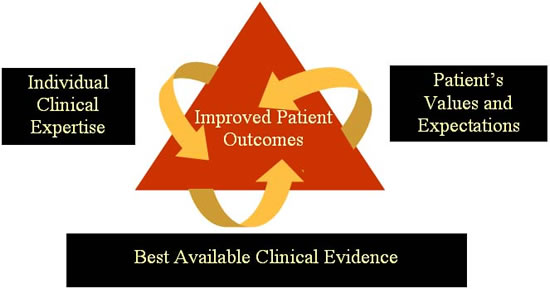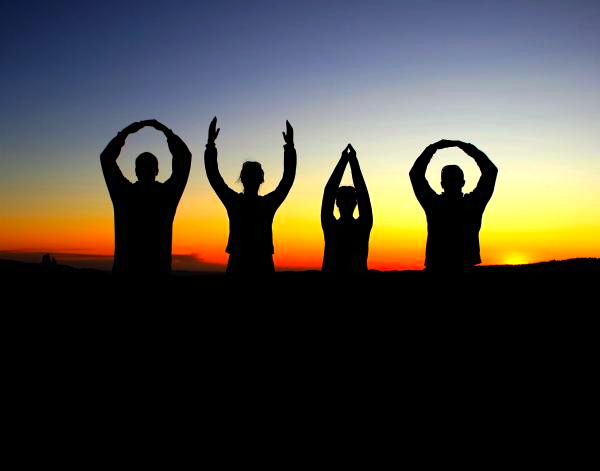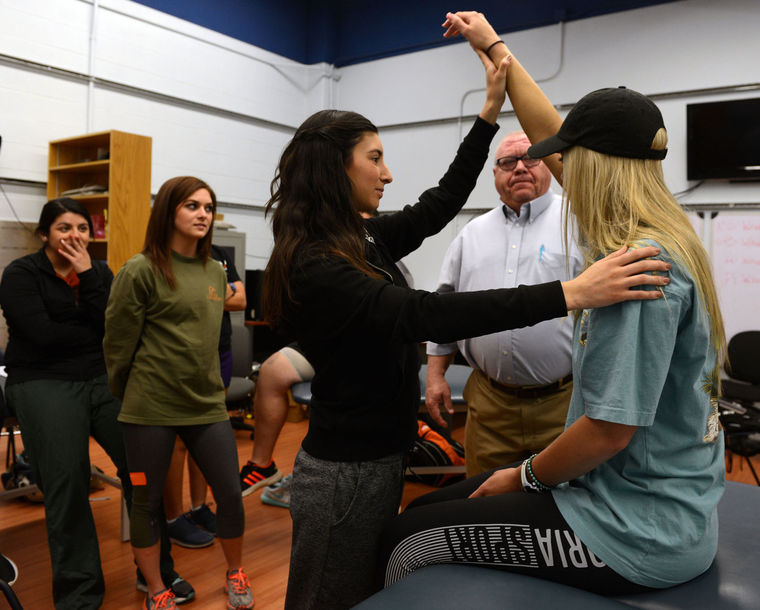
Article reposted from OA Online
Author: Ruth Campbell
Being athletes themselves got Courtney Brower and Ailem Villarreal interested in studying athletic training at the University of Texas of the Permian Basin.
Athletic trainers are health care professionals who collaborate with physicians in prevention, emergency care, clinical diagnosis, therapeutic intervention and rehabilitation of injuries and illnesses, the National Athletic Trainers’ Association website said.
Brower, a 22-year-old junior, started out in physical therapy at the University of Toledo for two years.
“When I transferred here, I liked the idea of working with sports and being a little bit more hands on with the athletes,” Brower said.
“Growing up, I did gymnastics so I dealt with a lot of injuries,” Brower said. “The coming back part was very interesting to me, like the rehab and trying to get back in shape, so that played a role, as well. I like seeing people come back and be healthier and still being able to compete at the same level.”
Villarreal was a pre-med student at UTPB when she decided to turn to athletic training.
“I just remembered back in high school I was always in the athletic training room and I loved it. I like working with sports and I like helping athletes, so it just all worked together so when I transferred I was like athletic training and I got in touch with doc,” Villarreal said, referring to Richard Lloyd, associate clinical professor of kinesiology at UTPB. Lloyd also is the Athletic Training Education program director.
Lloyd said there are 22 students in the clinical portion of the athletic training program.
The UTPB website said the athletic training education program blends both clinical and classroom components to develop a “well-rounded entry-level certified athletic trainer.
Richard Lloyd associate clinical professor of kinesiology said there are 22 students who are active in the clinical portion of the program.
“The professional phase of the program is when you’re taking both classroom classes and the hands-on clinical experiences. There are a series six semesters of the clinical experience. Each clinical practicum has specific goals and competencies that are developed through each of them as they move through the program,” Lloyd said.
Students graduate with a bachelor of science degree in athletic training that makes them eligible to take the National Board of Certification Exam, Lloyd said. Graduates have started out working in sports medicine clinics, and in the course of that work, they may be contacted by a high school that offered them a position on staff.
UTPB’s program is accredited by the Commission on Accreditation of Athletic Training Education. One has to graduate from an accredited program to take the national exam, he added.
“We like to say, as a health care profession, we are responsible for the care, prevention and rehabilitation of athletic injuries. State laws word it somewhat the same, but instead of saying athletes, they say the physically active so that doesn’t limit it to just sports teams,” Lloyd added.
Athletic trainers may work in areas that people don’t necessarily put with the profession.
“The traditional setting used to be high school and college and professional sports teams. There are a lot of new emerging settings. … Athletic trainers are on staff in places like Disneyland and NASA and Las Vegas shows,” like Cirque du Soleil.
Lloyd and Gary Danielson, head athletic trainer at UTPB, athletic trainers at PHYTEx and some of the high school athletic trainers from high schools in Odessa and Midland have donated their time to care for Sandhills Rodeo participants.
Danielson said he thinks the program is growing and the student selection process is improving. What he looks for in a student is someone who is “with it.” Students should be interested in the field before they ever sign up.
“You can’t necessarily put it down just on knowledge because you can be really smart and not know how to apply things. There’s just a certain amount of awareness,”
The athletic training program at UTPB is part of the Kinesiology Department because there’s a lot of cross-over with some of the same core curriculum classes, such as analysis of human movement, exercise physiology, first aid and CPR.
“We are housed in there, but we are a separate major,” Lloyd said.
And he wants people to know that trainers are not just “Gatorade kids.”
“That’s one of the stigmas that my profession is working hard to overcome that we’re just not the water boy,” Lloyd said. “There’s a lot of re-education of muscle groups and rehabilitation that goes on, as well as other standard therapies using ice, compression, elevation (and) heat packs.”
Evidence-based practice, making therapeutic decisions based on documented research findings and the internet have also changed the profession, Lloyd said.
“Access to more knowledge is always helpful,” he said. “Within evidence-based practice, there is leeway for the clinician’s experience. …”
The patients’ wishes also are taken into account, so they won’t become noncompliant.
“To remain licensed and certified, athletic trainers have to maintain a requirement of continued education that you have to submit and it is documented every two-year period nationally,” Lloyd said.
He added there are a lot of positions that come up for athletic trainers in Texas. Lloyd said he grew up in the Niagara Falls/Buffalo, N.Y., area, went to college in Indiana and graduate school in Illinois. He got married and was living in St. Louis, but there were no jobs, so he applied in Texas and wound up at Canyon High School.
“That’s where my career started as a high school athletic trainer,” said Lloyd, who is in his ninth year at UTPB.
Since March was National Athletic Training Month, Lloyd said it was a good opportunity to promote the profession, because they work mainly behind the scenes and a lot of people don’t understand the difference between what a coach does and what athletic trainers are trained to do.
“That’s one of the reasons why they do certain rotations and the emphasis is on certain things, but they’re doing hands-on under the instruction of their preceptors,” Lloyd said. “We also use the emergency room at Odessa Regional (Medical Center) where they do a rotation. … The emphasis is non-sport, non-orthopedic patients.”
“They do a rotation with football, which is an equipment intensive sport,” he added. “They also have good experience with both men’s and women’s team and individual sports. Those are the requirements that we have to make sure our students get to remain accredited.”
ORMC has Wednesday and Saturday sports clinics that attract people from around the region. The emergency room also allows students to see all kinds of trauma.
“The thing is with athletic training is you wake up in the morning and you don’t know what you’re going to have to manage – anything from a laceration to the possibility of a catastrophic injury,” Lloyd said. “You just never know what may happen that day.”
